The once little-known island of Koh Phayam, with its peaceful atmosphere and nearly untouched natural beauty, has now become the perfect destination for those looking to escape the hustle and bustle of Thailand‘s more touristy and crowded areas.
Located close to the Myanmar border, Koh Phayam was once home to the Moken people and bohemians. Today, it attracts those who dream of finding a corner of the country that still preserves a bit of what early travelers discovered when only a few adventurous souls grabbed their backpacks and ventured into the hidden corners of Southeast Asia. Though, that may now be more of a nostalgic illusion.
With electricity, more accommodations, and a small road running from one end of the island to the other, it’s true that things have gotten easier, and more people are now venturing to visit Koh Phayam. However, don’t go expecting parties or exotic tourist activities—you won’t find them here. There isn’t even a 7-Eleven, just as we mentioned about Koh Kood.
There are no large hotel complexes or bustling nightlife on Koh Phayam, but you’ll find everything you need if you enjoy the simplicity of the beach and the sea.
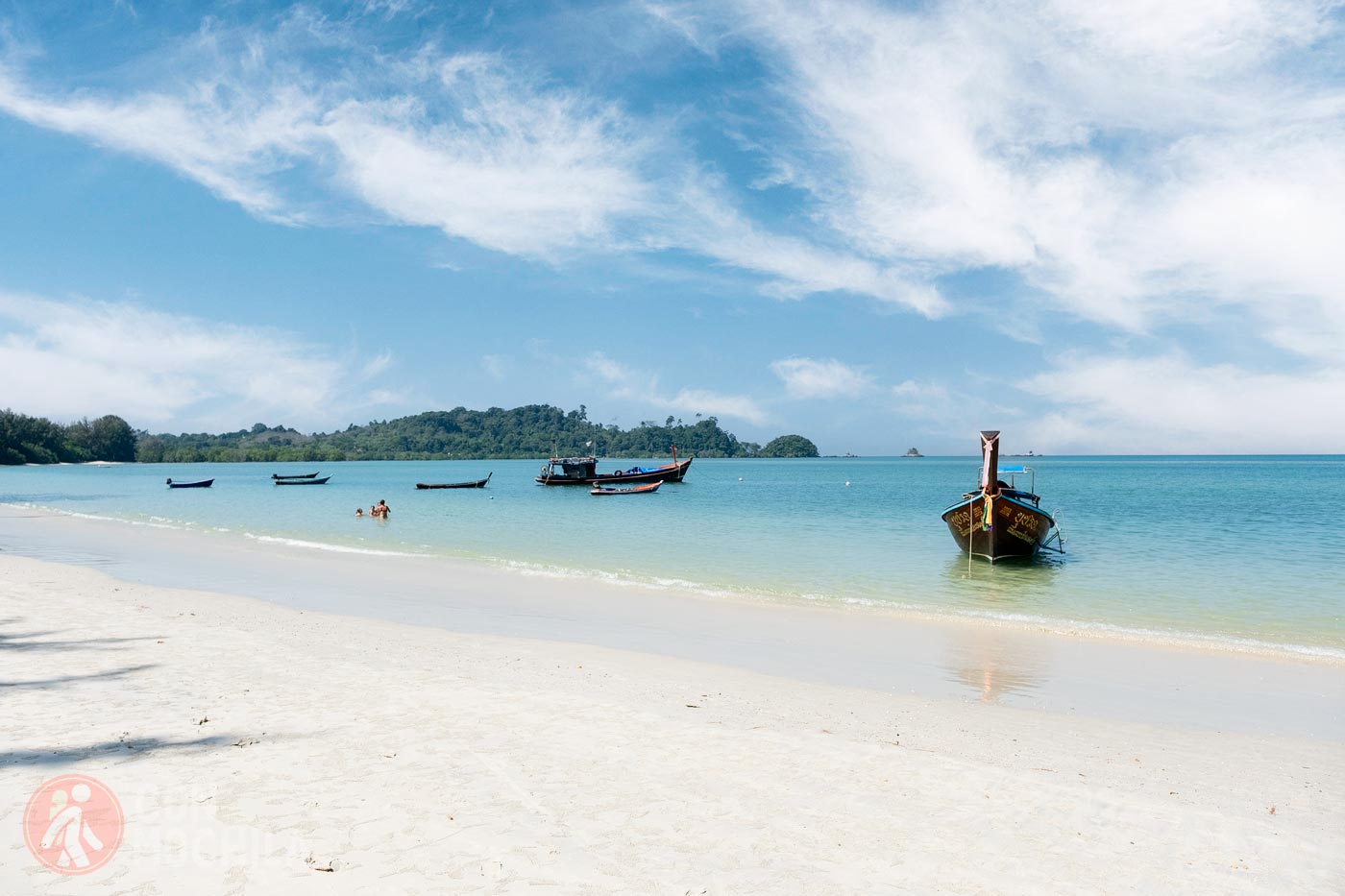
The island is particularly popular with German tourists, though for some reason it hasn’t caught on as much with Thai tourists, who tend to prefer destinations closer to Bangkok, like Koh Samet or Koh Larn.
Koh Phayam is an ideal place to relax and enjoy nature. Disconnecting is up to you, though, as the internet is now available on the island. Not all accommodations have Wi-Fi, but with a SIM card, you’ll have a good connection in most areas.
Of course, taking long walks along the beach, snorkeling in the nearby reefs, kayaking, or simply lounging in a hammock and enjoying the panoramic views makes it easy to find peace.
If you want to stretch your legs and stay active, you won’t be bored. There are opportunities for hiking and exploring the island’s interior forests.
Although there are no major paved roads on Koh Phayam, sections of the main road have been improved in recent years, and most travel is done on foot, by bicycle, or by motorbike.
Koh Phayam experiences two main seasons: the rainy season and the dry season.
During the rainy season (May to October), the island sees a significant increase in rainfall, with July, August, and September being the wettest months. Rainfall can be heavy and prolonged, occasionally leading to temporary flooding in some parts of the island.
Although temperatures remain warm, the humidity rises, making the weather feel more oppressive.The dry season (November to April) is the most popular time to visit Koh Phayam. The days are sunny and dry, with pleasant temperatures. December to February is the peak tourist season, offering cooler temperatures and lower humidity, with daytime highs typically ranging from 28°C to 32°C.
Travel advice: Check out our article on the best time to visit Thailand for month-by-month climate information.
To begin with, we always recommend getting good travel insurance Thailand. This can save you a significant amount on medical expenses and, most importantly, ensures that the insurance covers the costs upfront, so you don’t have to pay out of pocket.
In the previous article, we go into more detail about healthcare in Thailand, as well as tips on how to get the best insurance (and save money).
Nowadays, finding hotels, guesthouses, or restaurants in Thailand with free Wi-Fi is pretty common. However, there are still those who prefer (or need) to stay connected at all times.
That’s why we’ll show you how to get an eSIM Thailand card with internet— now also available with unlimited data.
To reach Koh Phayam, you first need to get to Ranong, a typical coastal town that serves as a gateway to the islands. While there’s not much to see, it offers plenty of accommodation and affordable dining options. From Bangkok, you can travel to Ranong by bus or plane.
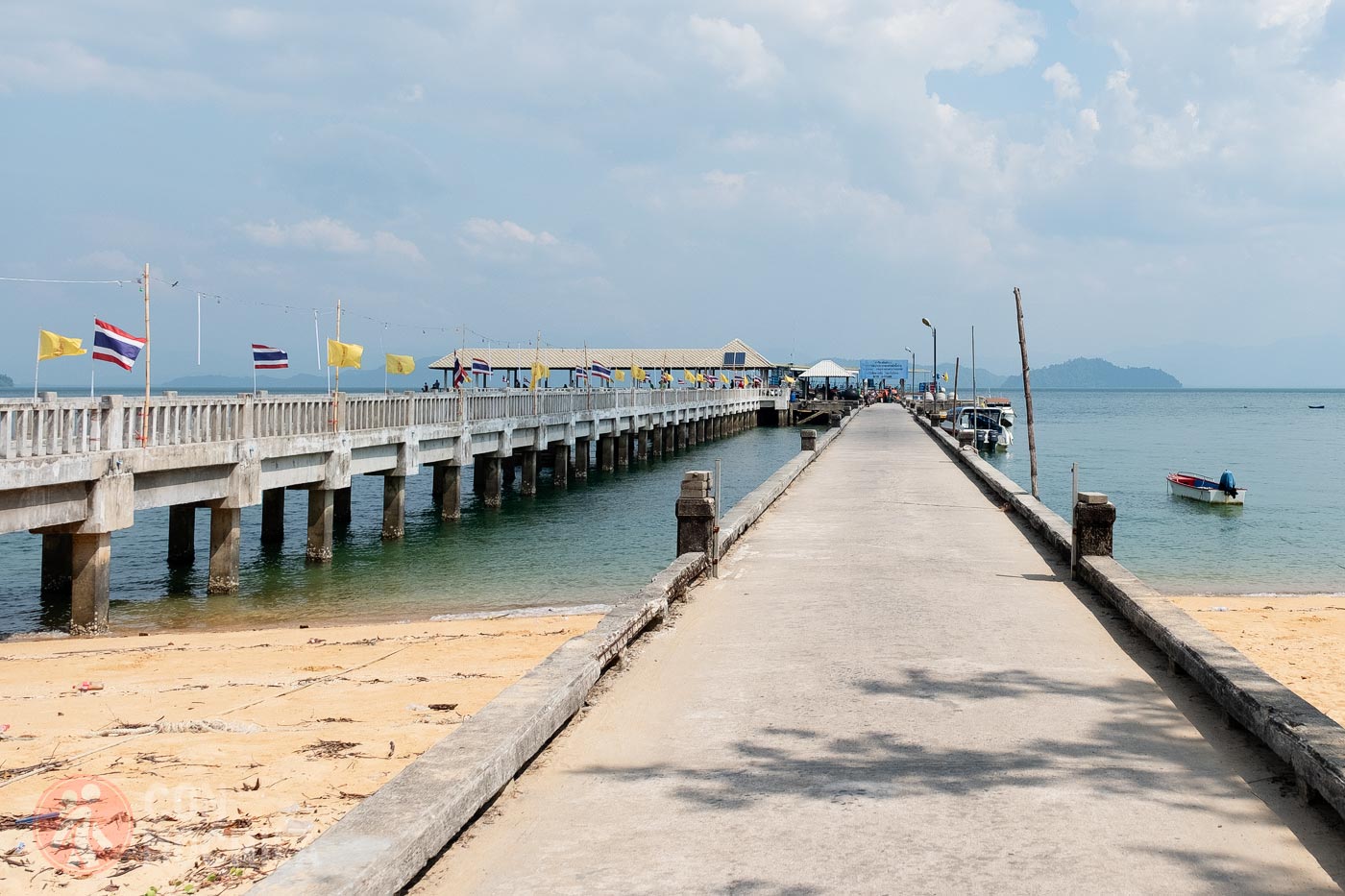
Ferries (a 2-hour journey) depart from the port once a day, and speedboats (a 40-minute journey) run several times a day during high season. You can even book your tickets from the airport or bus station through 12GoAsia.
If you take a close look at the island’s map, you’ll notice that it isn’t very large, and there are only a few beaches to visit. But trust us when we say that Koh Phayam doesn’t need more.
With its wild, untouched beauty, Ao Yai is the largest and most popular beach on Koh Phayam. It stretches along the island’s west coast and boasts a wide, sandy shoreline that runs for a couple of kilometers, perfect for long walks at sunset.
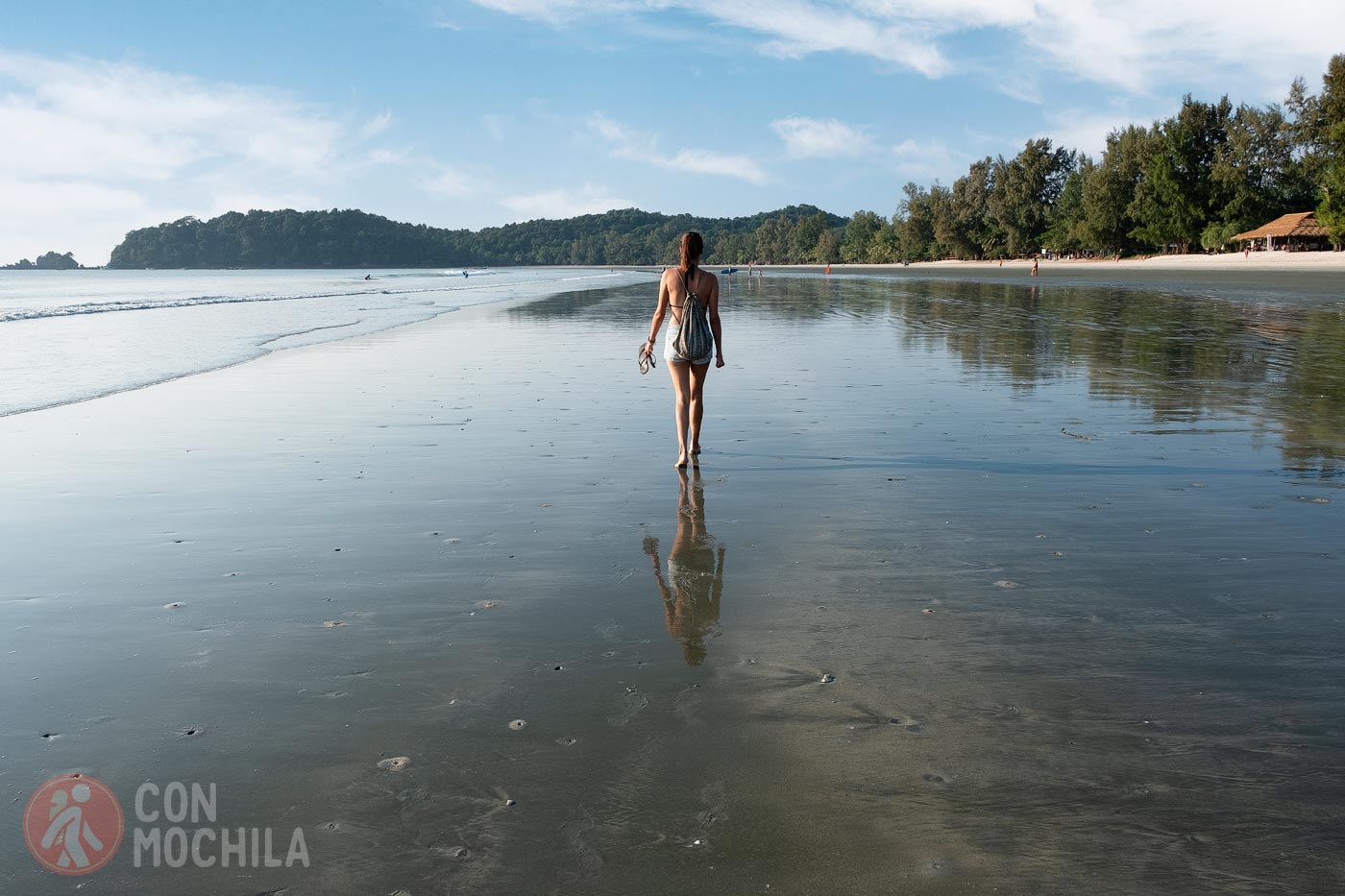
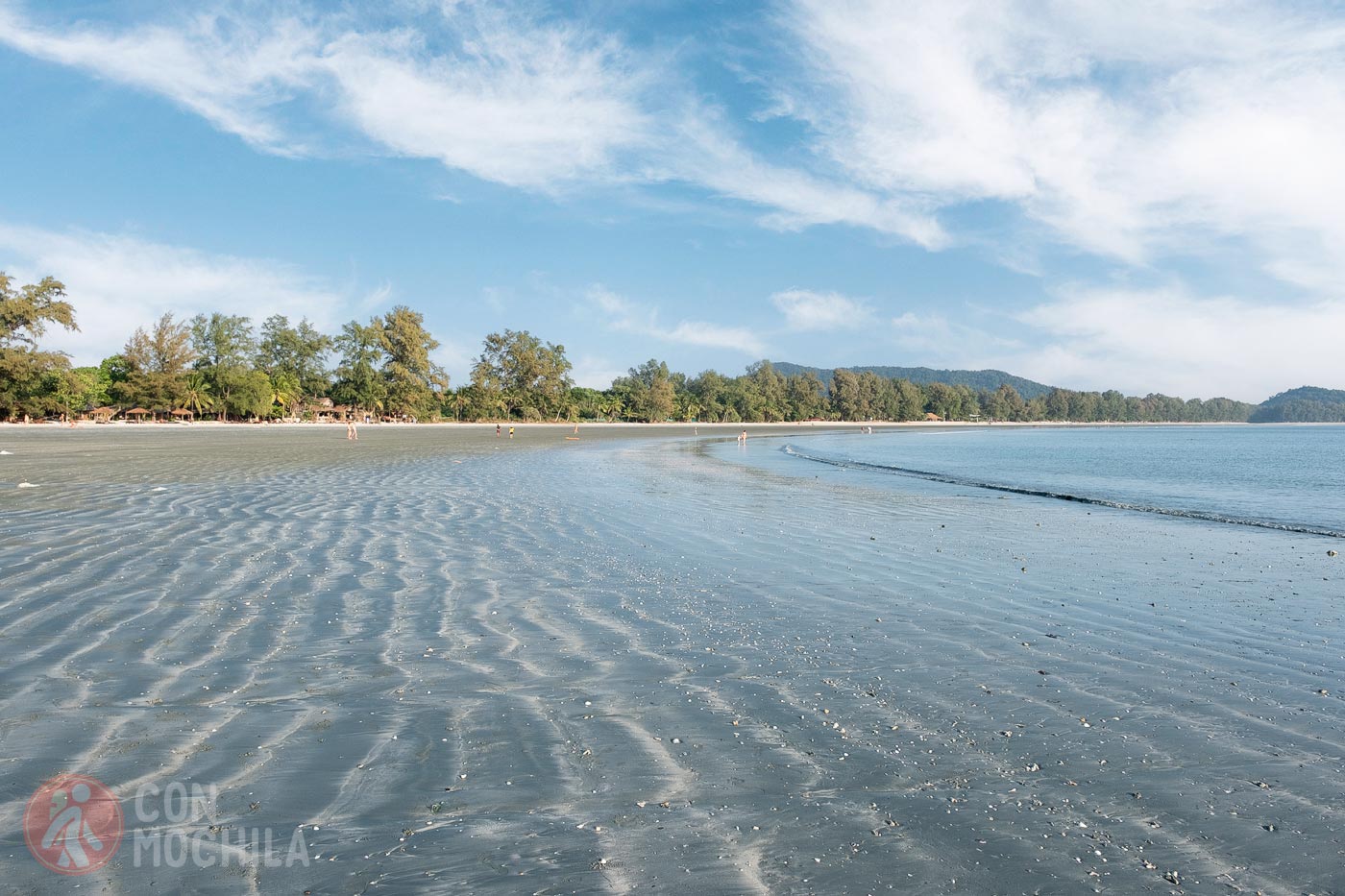
Here, you’ll find a good selection of accommodations, restaurants, and beach bars, but no flashy resorts—at least for now. Despite these offerings, you still get the feeling of being on a nearly deserted island.
Also known as Buffalo Bay, Ao Kao Kwai is a beach divided into two sections by rocks. It’s even quieter than Ao Yai and located on the eastern side of Koh Phayam. This beach is a bit more remote and less developed, making it an ideal choice for those seeking a more secluded atmosphere.
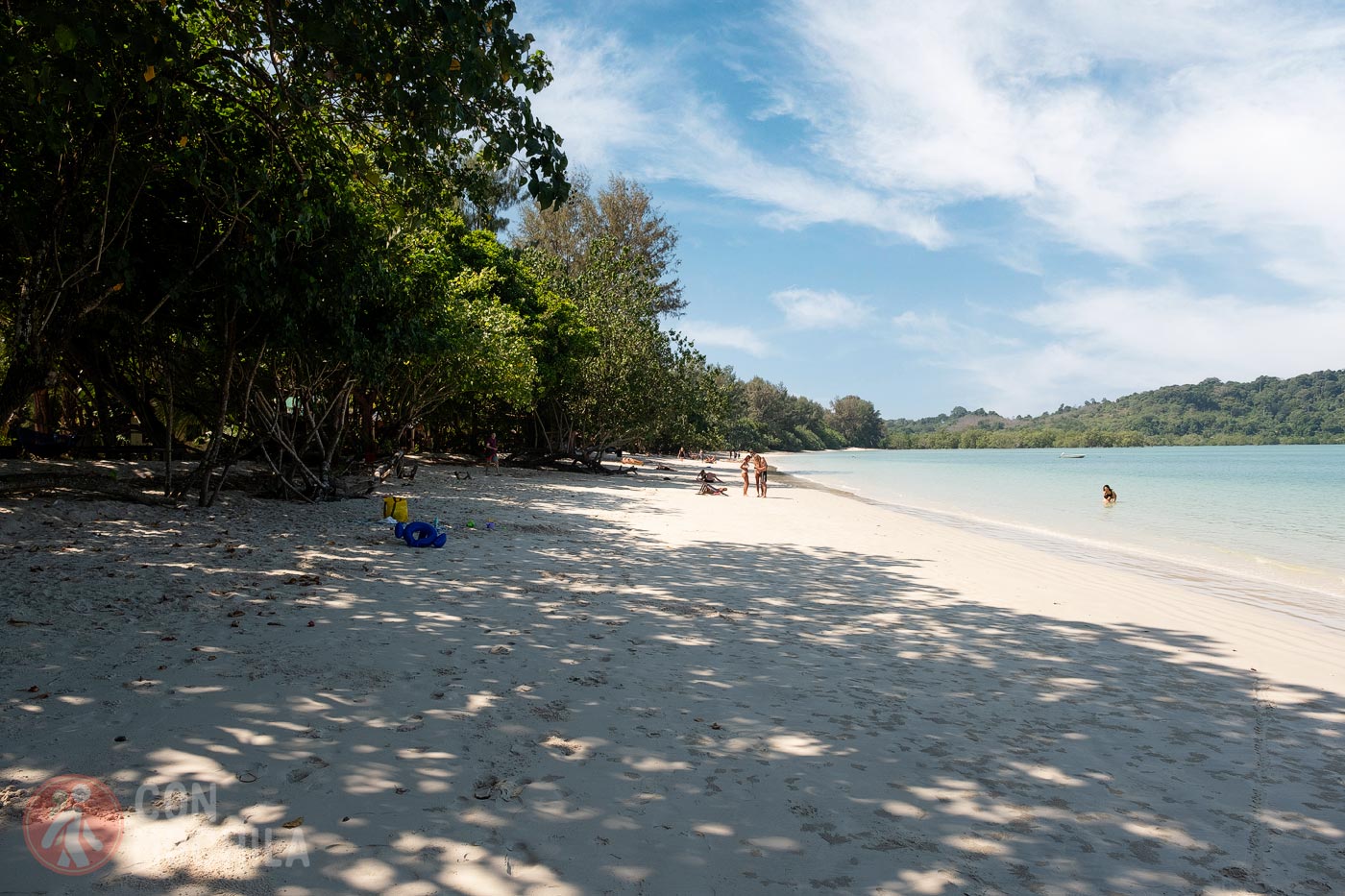
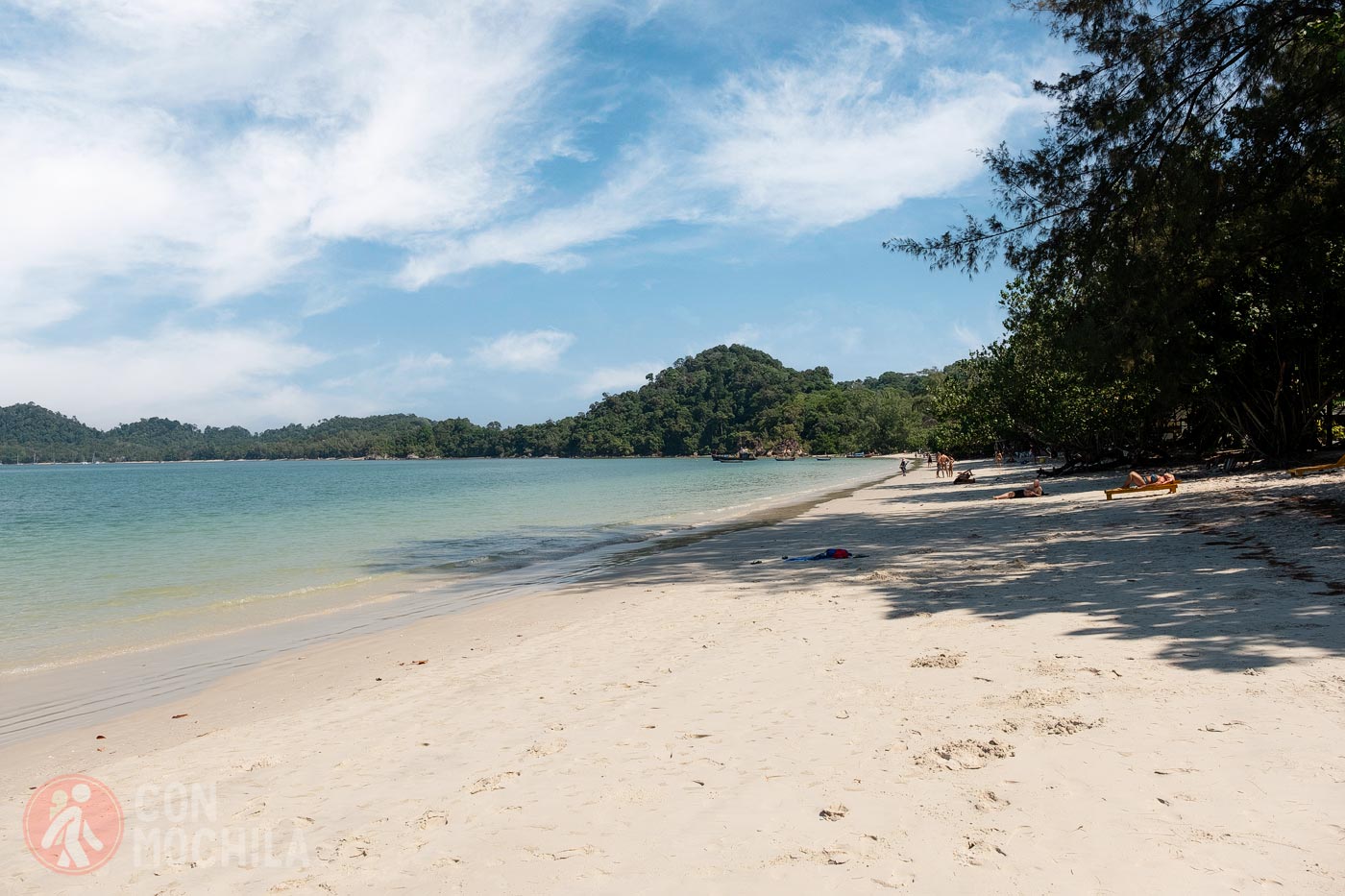
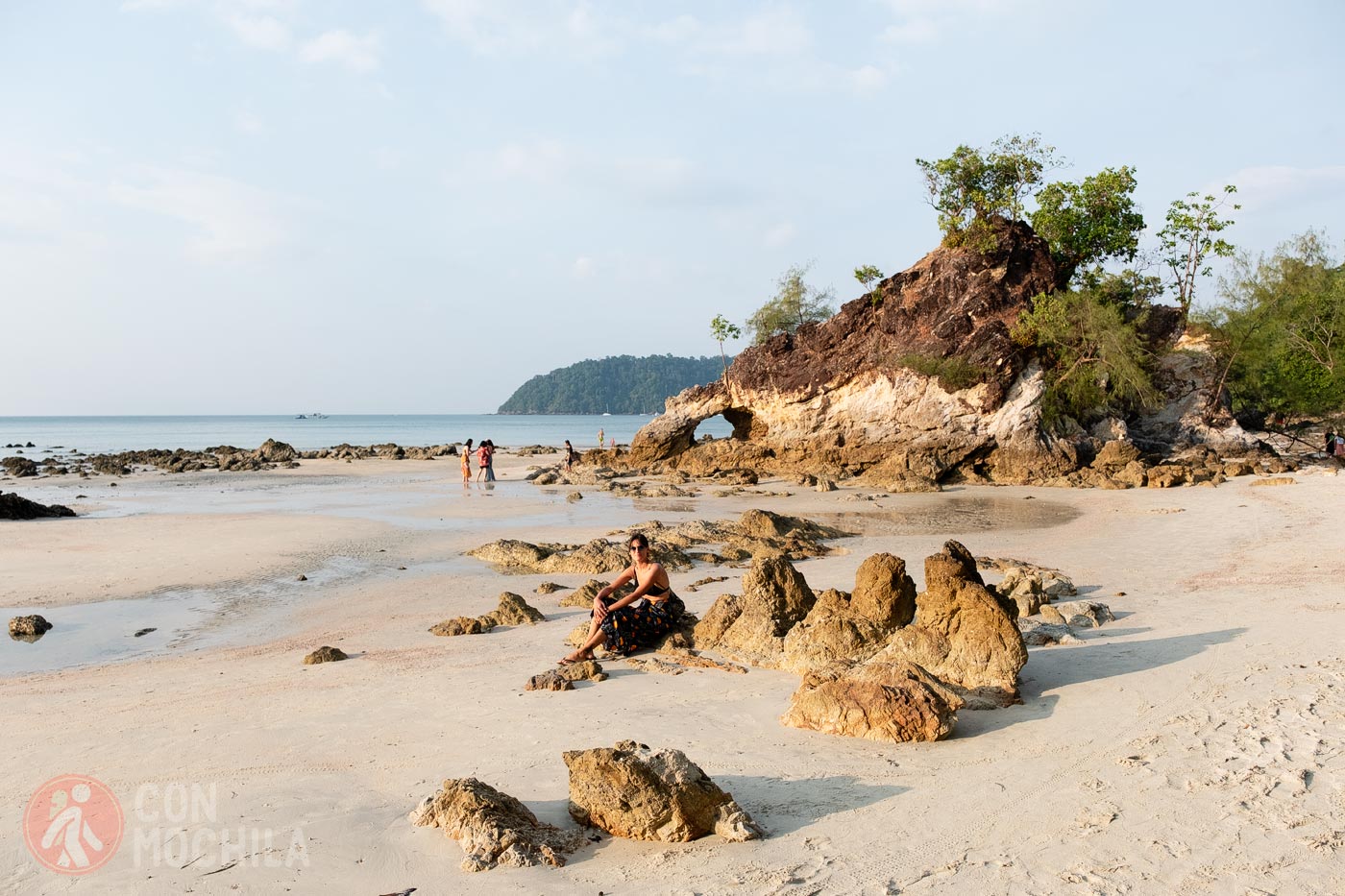
The beach is stunning, with clear waters—cleaner than those at Ao Yai—and an impressive natural landscape. Here, you’ll find bungalows and smaller, more rustic resorts, like ours, a simple cabin accommodation where we spent our last few days on the island: Rabbit Bungalows. If you’re looking for a laid-back, backpacker vibe, we recommend staying on this beach.
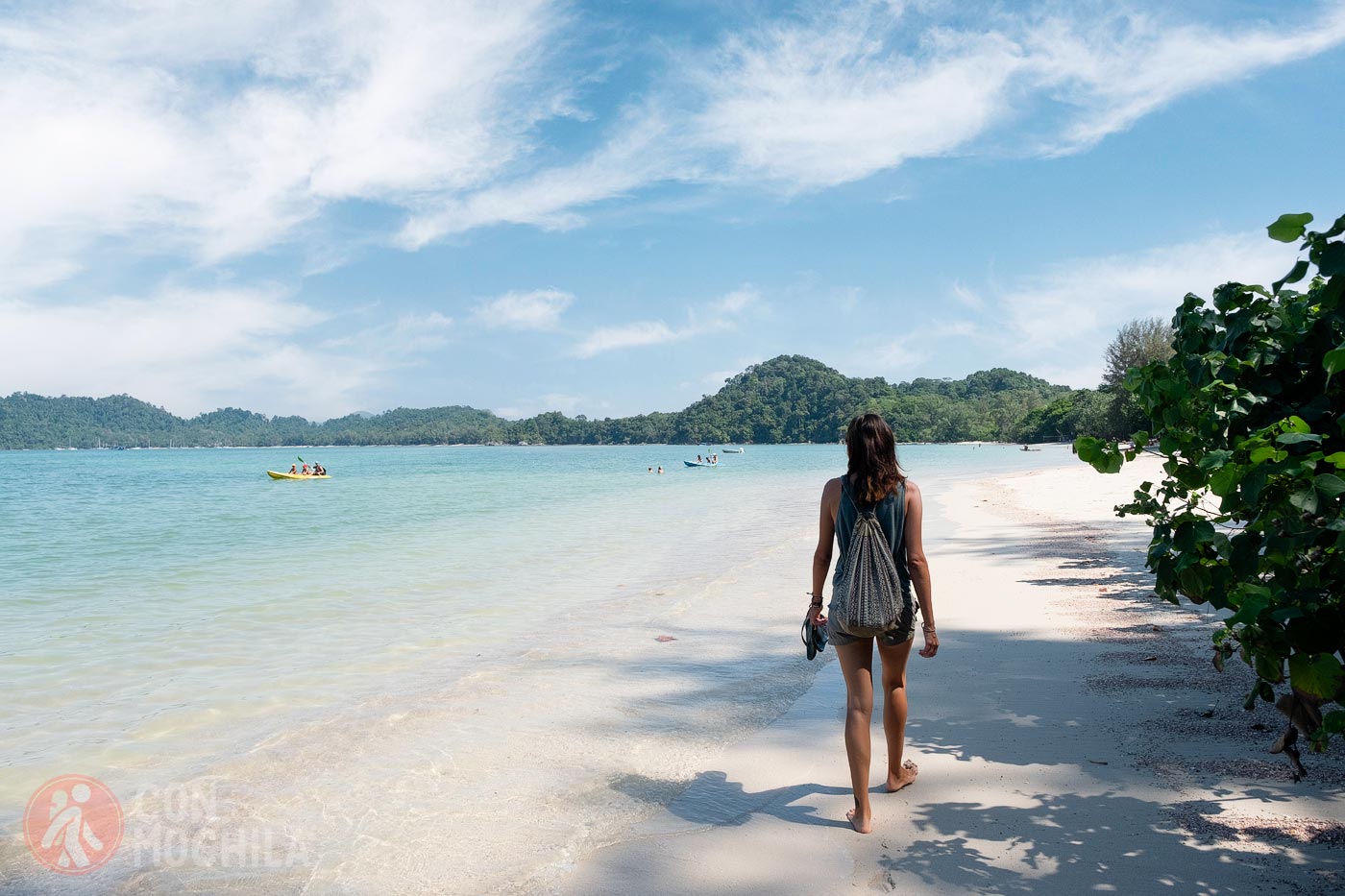
At the northern tip of Ao Kao Kwai, you’ll find the famous hippie bar. It doesn’t live up to its name entirely but looks like a beach bar set up on a deserted island with whatever they could find—quite a curious sight.
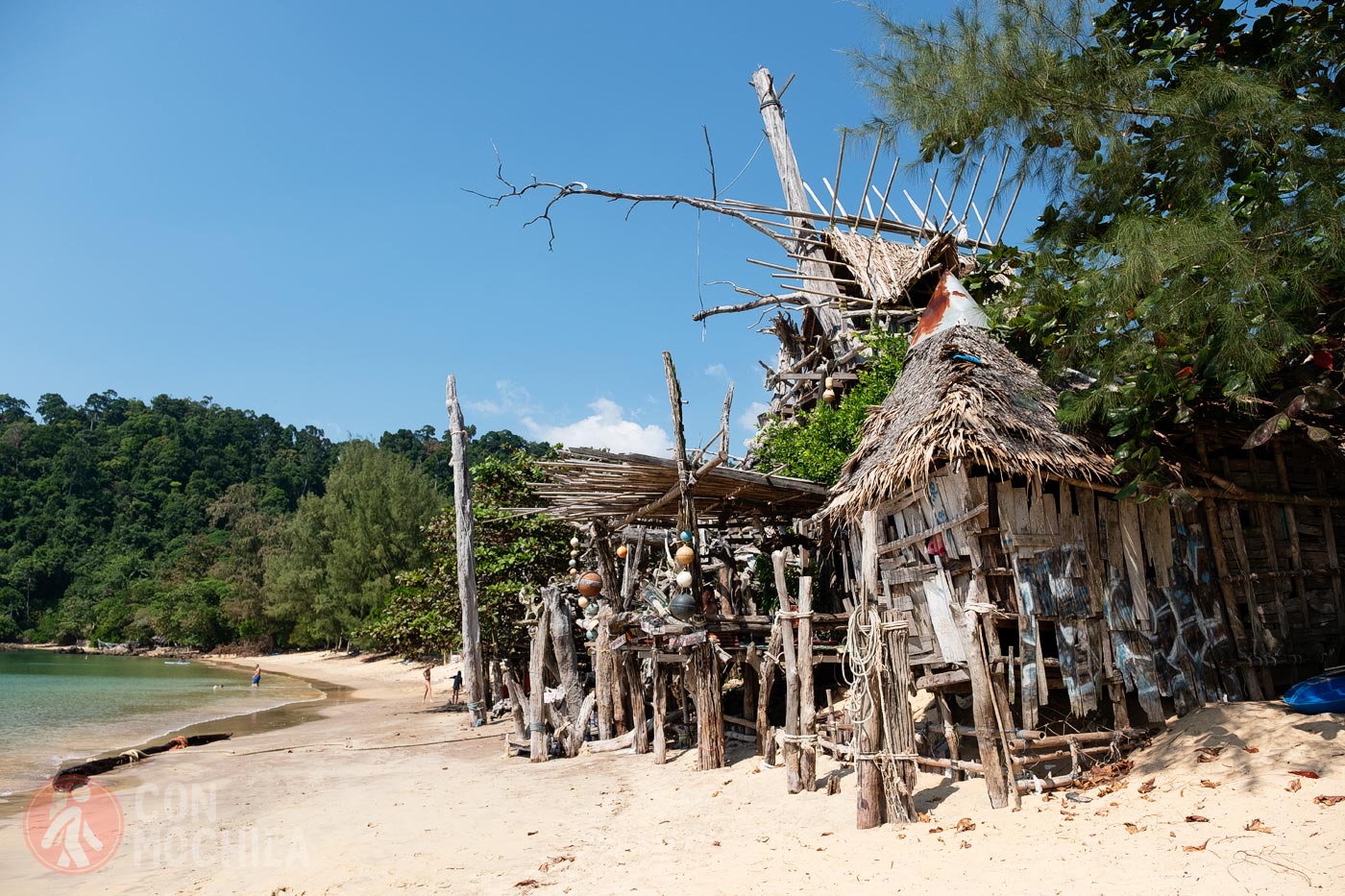
If you’re searching for smaller, more secluded beaches, fill up your water bottle, pack some fresh fruit, and head out to explore the island by motorbike or bicycle.
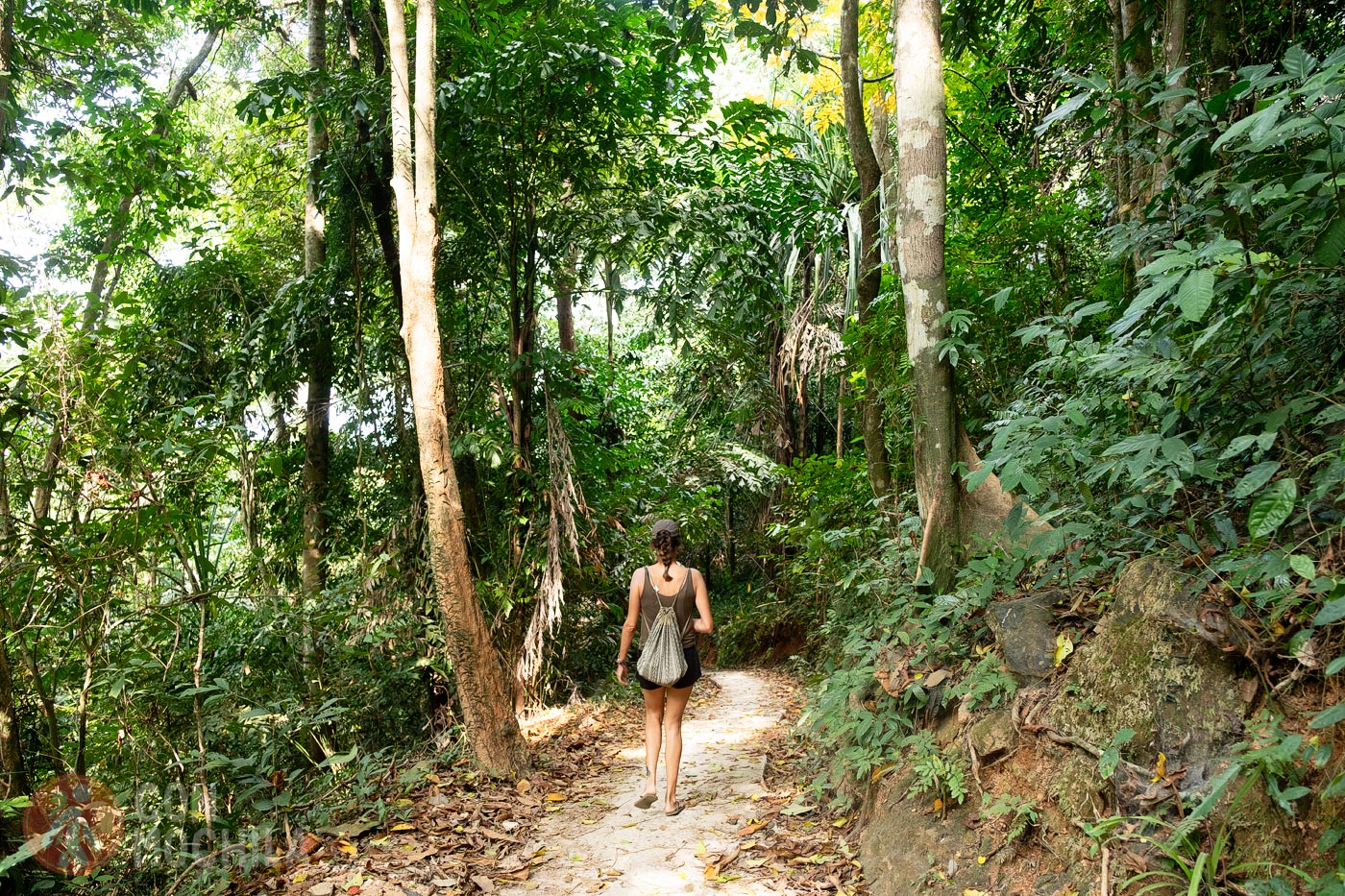
If you venture off the “main road,” which is mostly just a narrow-paved path, you’ll discover more remote spots, like the beaches of Ao Kwang Peeb, Ao Hin Cow, and Ao Moo. From here, you can see the small island of Koh Kham, which is reachable on foot when the tide is low.
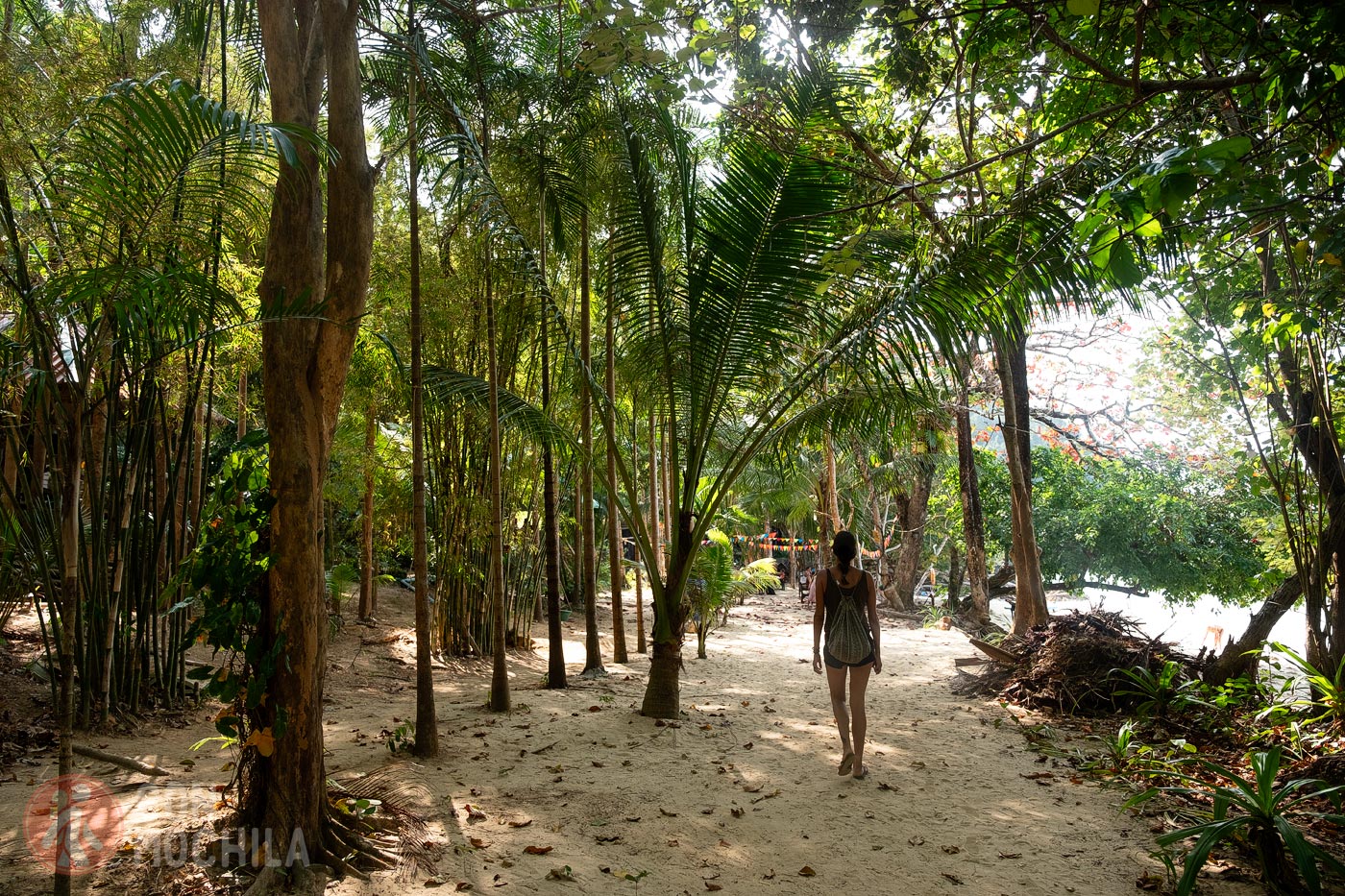
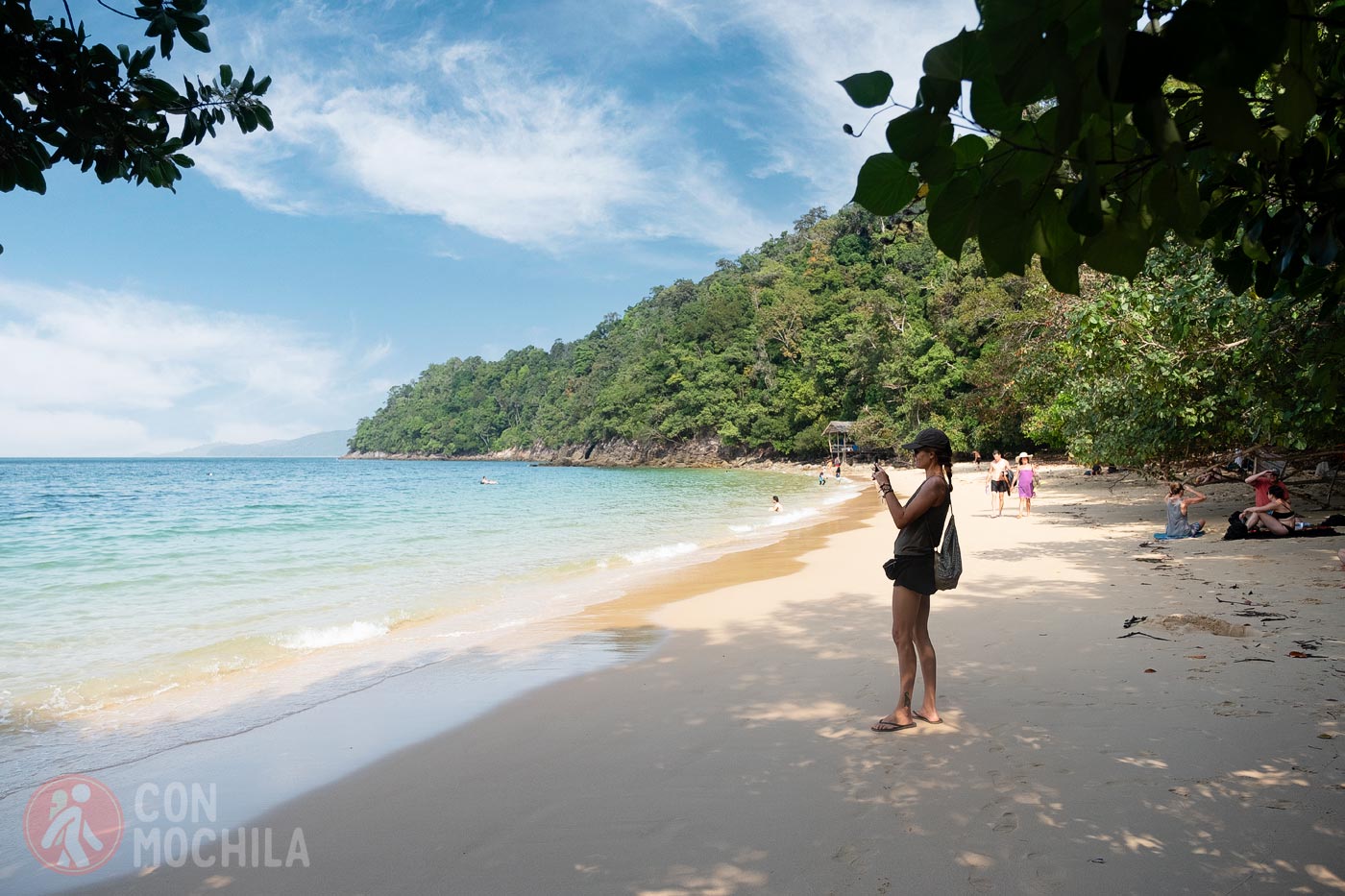
The beach where the port is located is much less attractive and often dirtier, but in this area, you’ll find most of what you’re looking for: shops, cheap restaurants, and agencies where you can buy ferry tickets or book excursions.
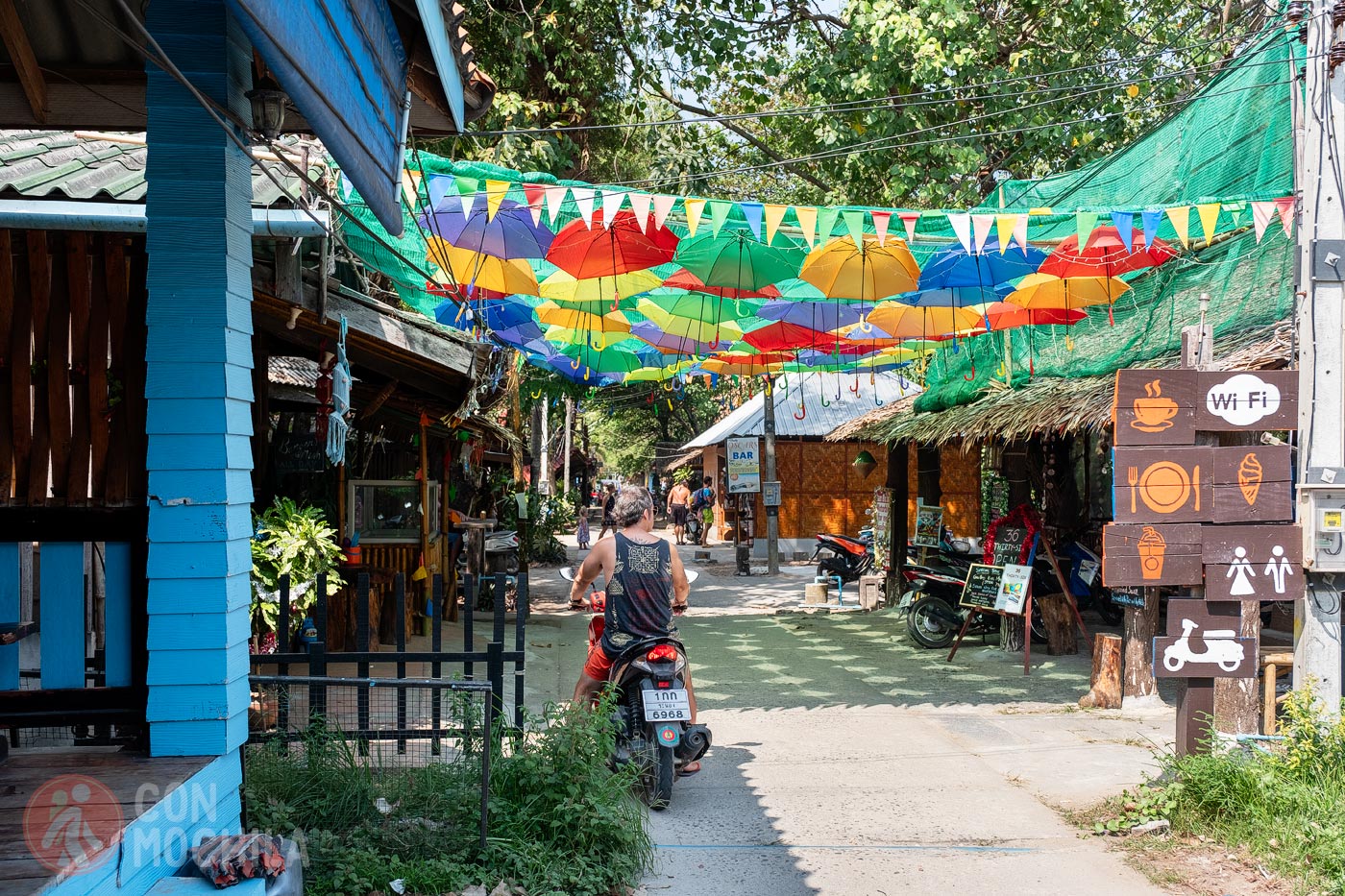
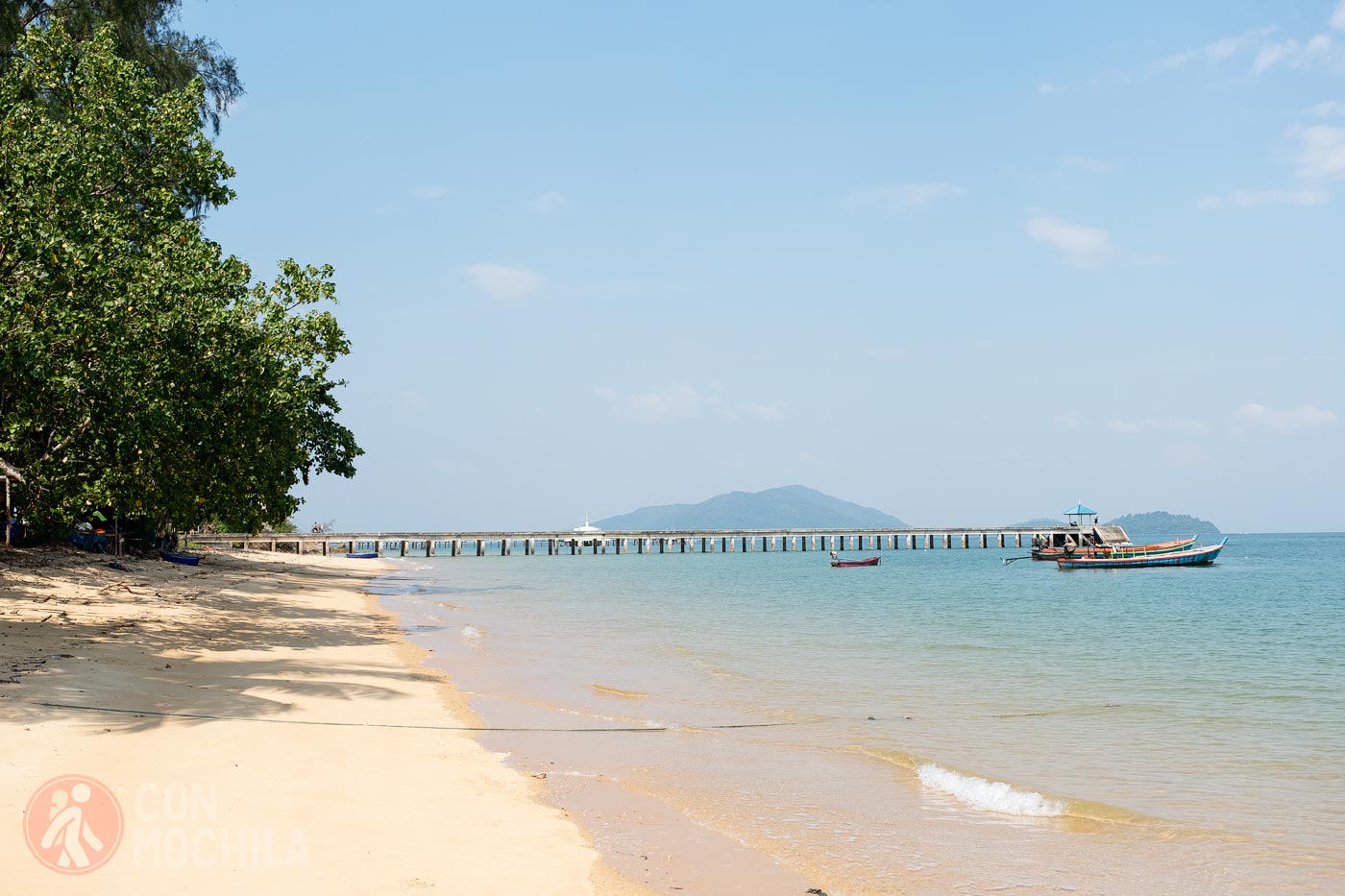
As a point of interest, if you pass through the area, there are a couple of Buddhist temples at the northern end, such as Wat Koh Phayam.
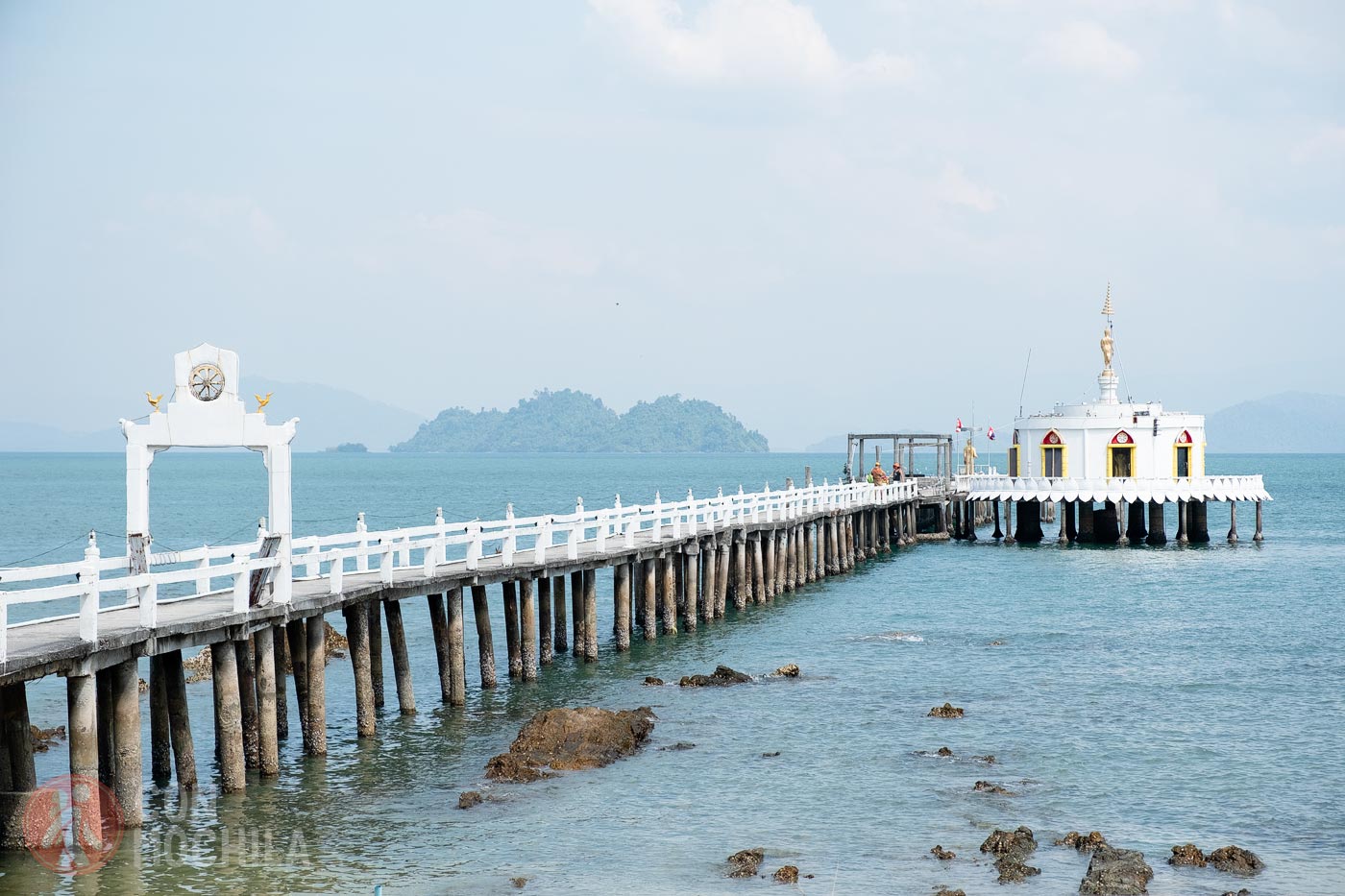
If we had to describe the island in just one color, it wouldn’t be blue—it would be green. The lush vegetation is so abundant that, despite Koh Phayam’s recent development, it still retains its wild spirit. A perfect example of this is that you won’t need a parasol or umbrella on the beach; you won’t have to walk more than ten steps to find the shade of a tree.
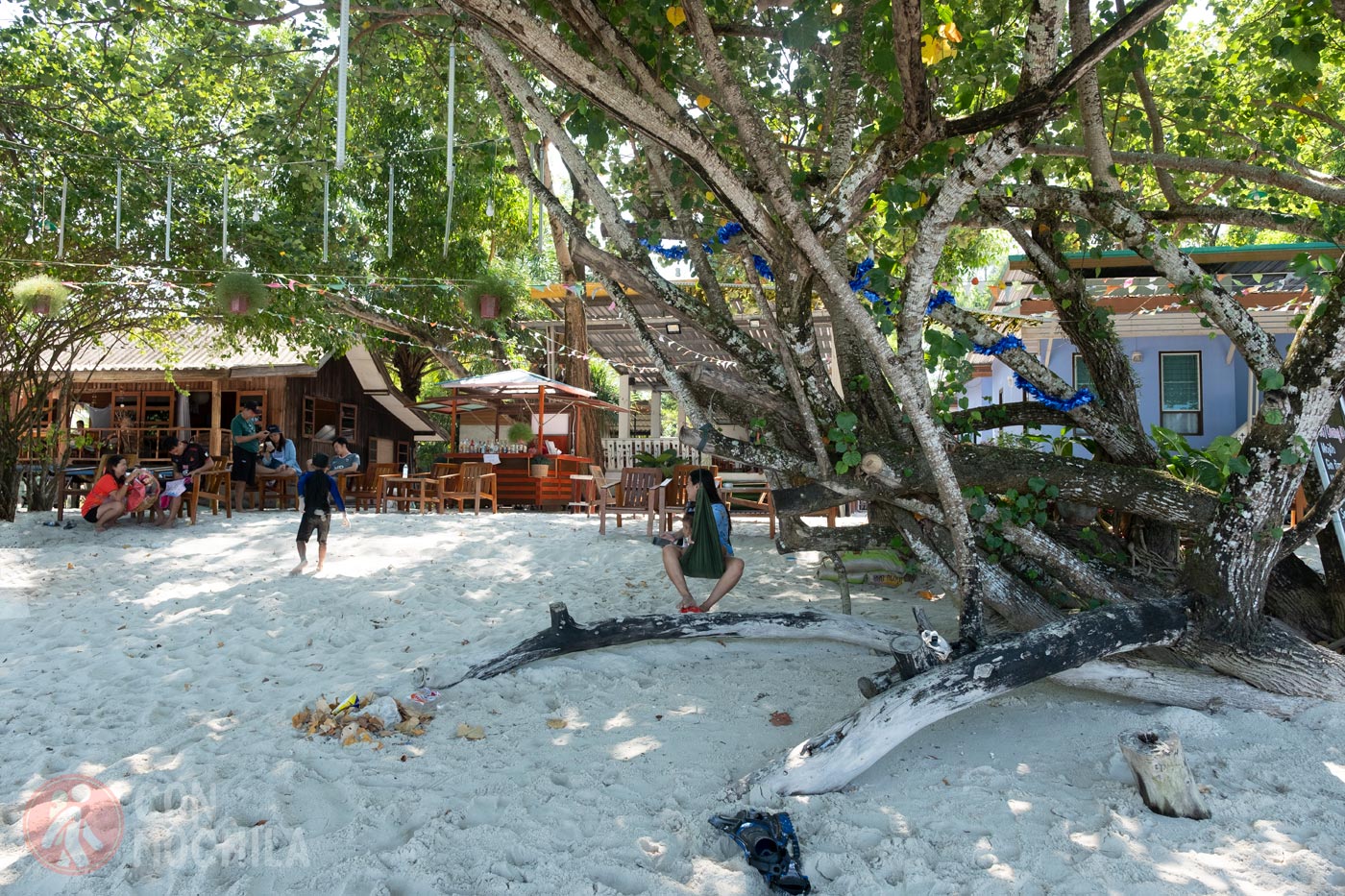
South of Ao Kao Kwai, there’s a mangrove swamp where you can kayak when the tide is high or walk among the crabs when it’s very low.
Fortunately, since mass tourism hasn’t reached Koh Phayam, neither have the more harmful animal-related activities. You won’t see elephants entertaining tourists or centers where you can take photos with big cats or other animals. (For more information on why you shouldn’t participate in these types of tourist activities, be sure to read this article.)
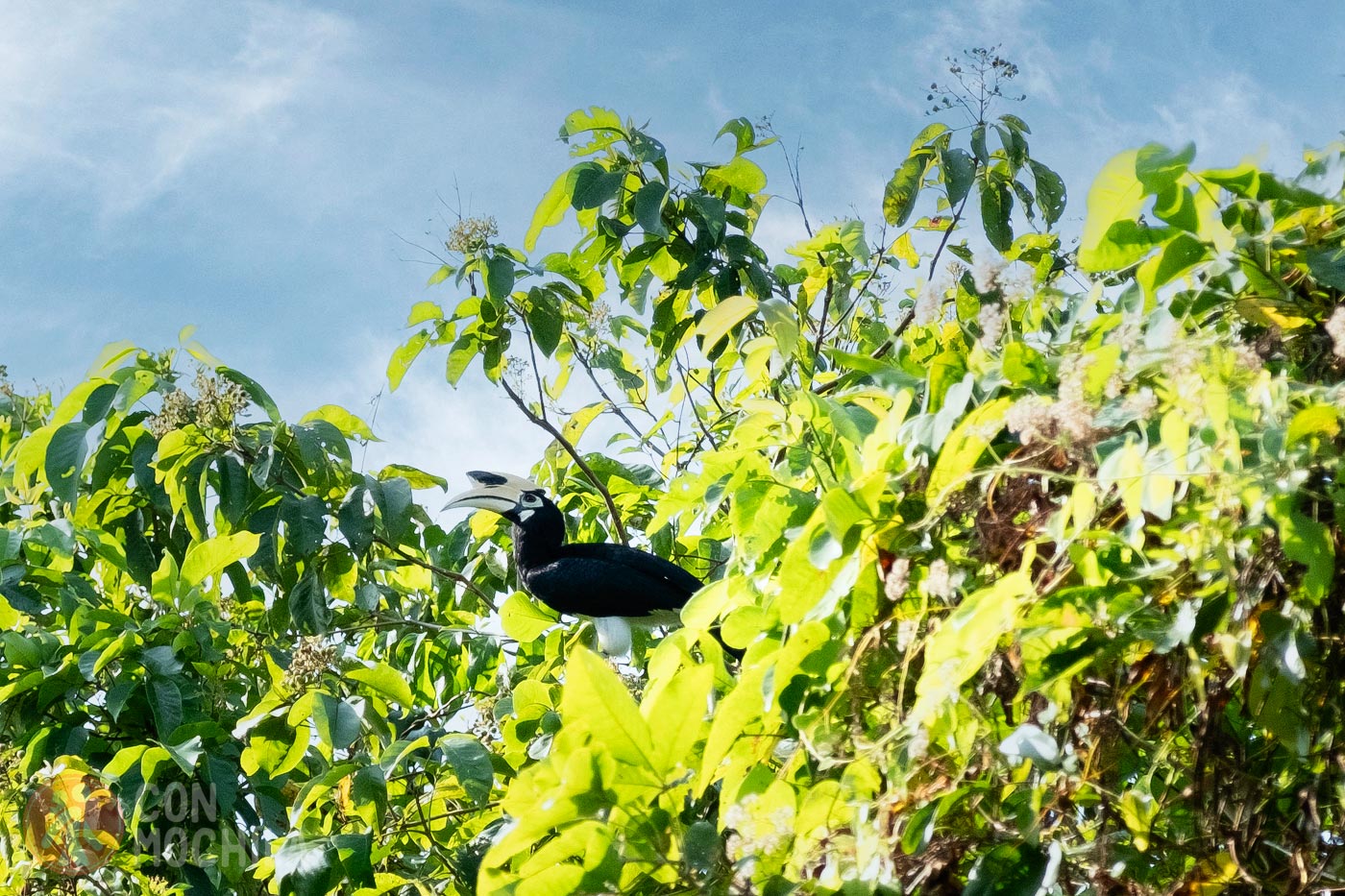
Among the many animals you can observe in their natural habitat are the fascinating hornbills, which are relatively easy to spot if you take a walk along the less-traveled paths. Spotting eagles is even easier—you can often see them from the beach. Remember, it’s crucial not to feed the wildlife.
Enjoy Koh Phayam at your own pace, whether you choose to stroll along its beaches or explore them by kayak. You can rent one at any guesthouse and enjoy the sea.
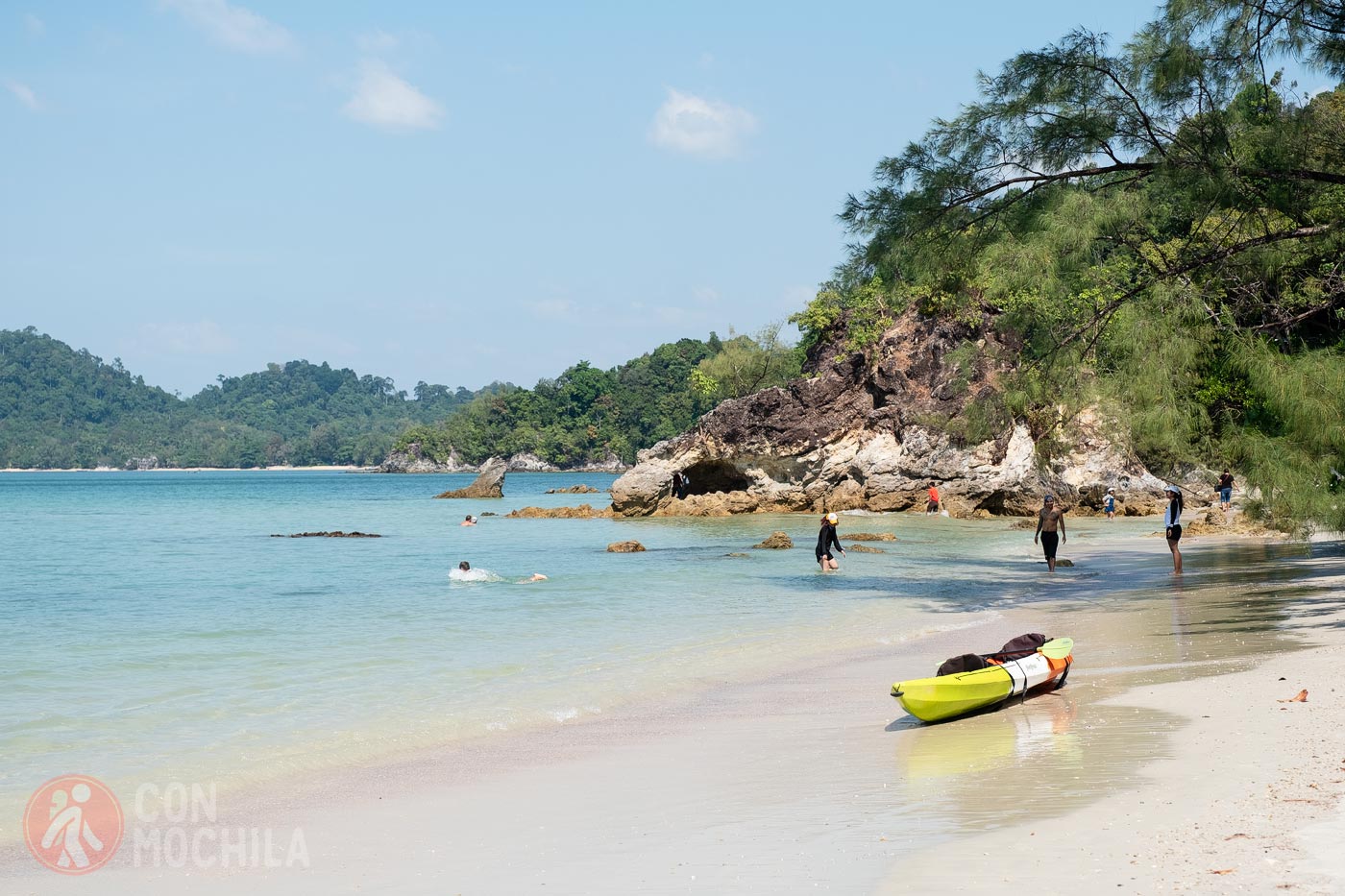
Even more relaxed than Koh Phayam is the neighboring island of Koh Chang (not to be confused with the larger island of the same name in southeast Thailand). There are no roads, making it the perfect destination for a complete digital detox. For those staying longer, you can take day trips by boat or motorboat.
Rabbit bungalow: For an authentic backpacker experience, we highly recommend Rabbit Bungalow. Run by a friendly couple, this accommodation offers simple cabins nestled in the bush, making it the ideal retreat for those willing to sacrifice a beachfront location for near-total isolation.
Surprisingly, you won’t be short on good coffee, as this remote and modest spot doesn’t skimp on a quality coffee machine.
Bamboo bungalows: This is a type of resort where we stayed during the first part of our trip to celebrate New Year’s Eve. It’s a good choice if you’re seeking adventure with a bit more comfort, as the cabins come with added amenities like softer mattresses and lovely bathrooms with views of the sky.
Feel free to check out these other recommendations we’ve left for you:
Although many accommodations on Ao Yai Beach also have restaurants, we think the best places to eat are inland, either along the main road or near the village.
Some spots we particularly enjoyed include Baan Nam Cha, a relaxed wooden eatery with good food.
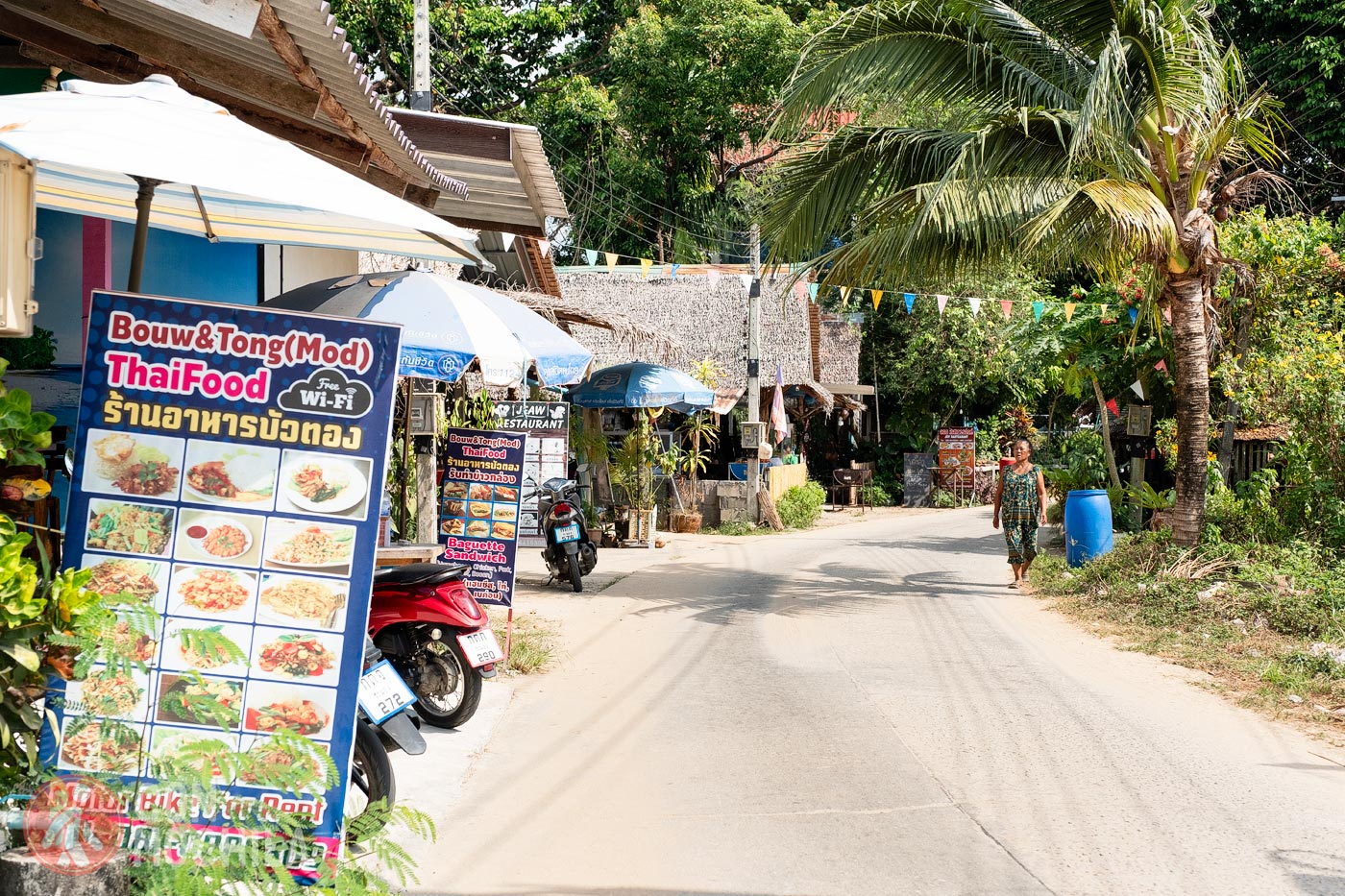
Cha Chai Home is temporarily closed according to Google Maps, but we hope it reopens during the high season. It’s an open-air, cheerful, and colorful place with a tempting vegetarian menu. It was a great spot even for after-dinner drinks…
Exploring the ocean floor is a fascinating activity, though for many, it can also be a bit unsettling. Simply putting on a diving mask and looking beneath the water reveals a whole new world of colors and unknown forms of life.

But this world needs to be cared for and respected. So, if you’re planning a trip that might include snorkeling and you don’t want your presence to have a negative impact on the ecosystem, you might be interested in what I share in the link above—what I’ve learned about responsible diving (with or without a tank).
Is Koh Phayam suitable for traveling with children? In my opinion, it’s not the best option for kids due to its limited activities, unless they really enjoy the beach. The decision depends on how well your children can entertain themselves in a place where the main attractions are relaxation and beach walks. But this is a personal choice and varies from traveler to traveler.
If you’re traveling with a baby, you may struggle to find baby supplies in the few small supermarkets, although this isn’t a major issue if you plan ahead. Be aware that while there’s a small healthcare center, more serious cases are sent to the hospital in Ranong.
You also can’t get around by car, and motorbikes with Thai-style sidecars aren’t the safest option for a baby or very young child. Islands like Koh Phangan, Koh Samui, Koh Chang, or Phuket offer more variety and are generally easier to navigate when traveling with family.
Since it’s a small island, you can get around by motorbike taxi or pickup truck, but the vehicle of choice here is the motorbike. The roads are quiet and in good condition, but as we always say: if you don’t have experience riding a motorbike, don’t start in Thailand (or Southeast Asia in general), especially on this island where the nearest well-equipped hospitals are far away.
Click on the image and it will take you to a new Google Maps window with all the points of interest to travel around Koh Phayam.